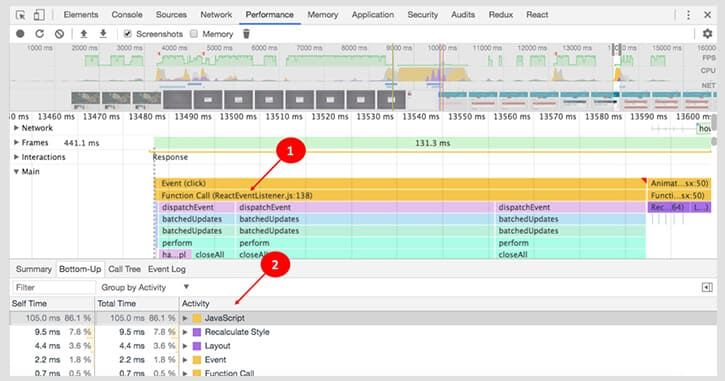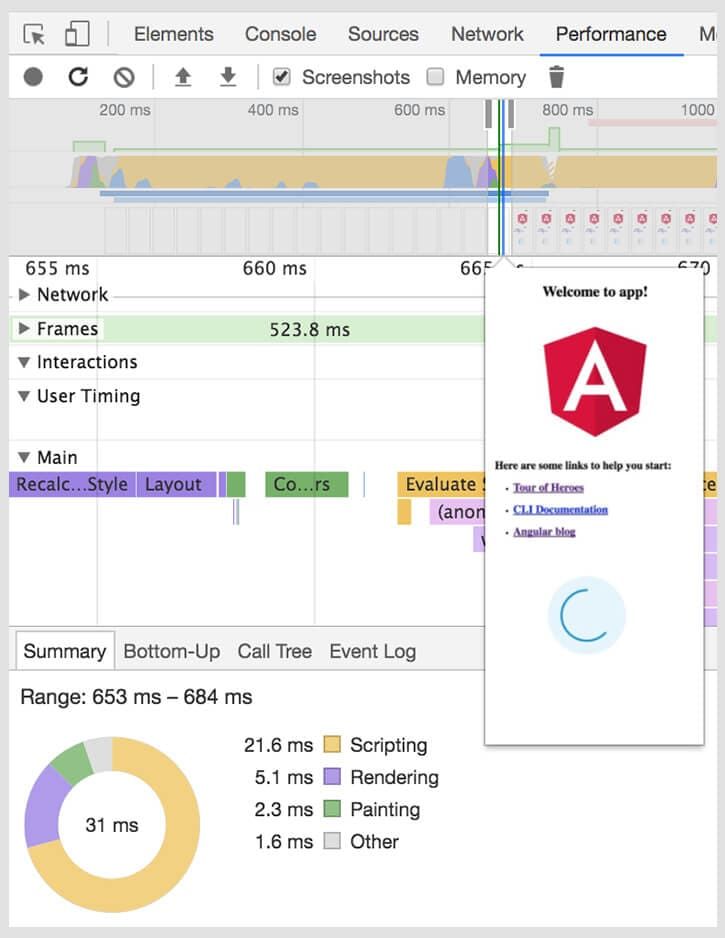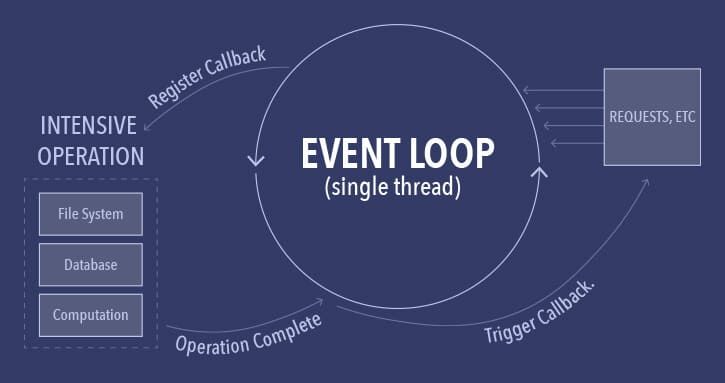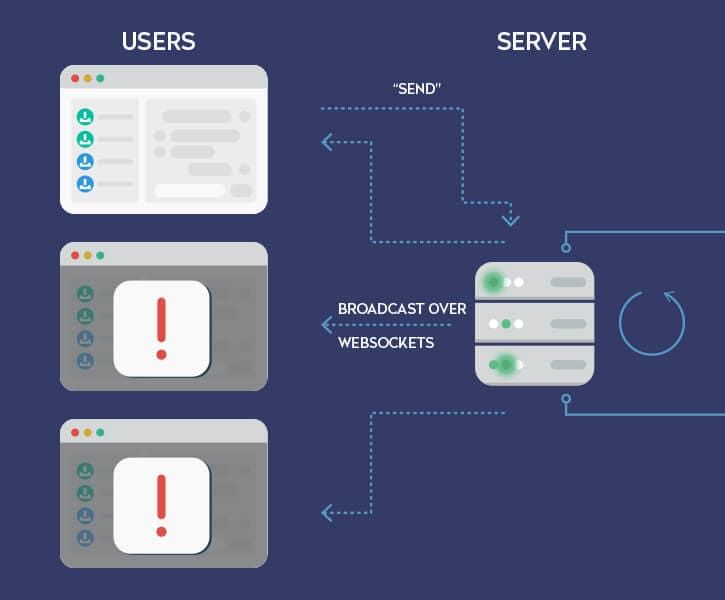If you’re wondering why Node.js has gained such massive popularity, you’re not alone. Since its launch in 2009, it has transformed web and app development, becoming the go-to choice for enterprises.
Several factors contribute to its success—a fast execution engine, an active developer community, and an easy learning curve. This is why industry giants like PayPal, LinkedIn, and Uber rely on Node.js for high-performance applications.
With its growing demand, many businesses look to hire Node.js developers to build scalable and efficient applications tailored to their needs.
In this article, we’ll break down what makes Node.js so fast and explore five of its best use cases in enterprise development.
What makes Node.js so fast?
The first thing that comes to everyone’s mind when we talk about Node.js is the execution speed. So, here we’ll try to figure out how is Node.js faster than the rest? First of all, it’s important to understand what ‘execution speed’ actually means.
The meaning of execution speed can range from Fibonacci sequence calculation to querying database.
In the context of web-services, execution speed consists of everything which is required for processing requests and to send a response to the client. It’s the time spent on processing request which begins from the opening connection and ends when the client receives the response.
Now, let’s have a look at a few points that will help us understand the secret behind Node.js’ speed.
- Node.js is asynchronous and single-threaded. This means that all I/O operations don’t block any other operations. It also means that you can send emails, read files, query the database, etc. all at the same time.
- Each request to the web-server won’t create a separate Node.js process. Although, one Node.js process would run at all times which would listen to the connections. JavaScript code is also executed in the process’ main thread while all other I/O operations are executed in separate threads which results in almost no delays.
- The virtual machine in Node.js (V8) which is responsible for executing JavaScript consists of a JIT compilation. The virtual machine can take the source code to compile it into the machine code at runtime. What it means is that all the “hot” functions that get called often than not can be compiled to the machine code thus boosting the execution speed.
These points helped us to get a glimpse at why Node.js is so fast. Now, let’s see what it is that makes all this happen in Node.js?

Understanding asynchronous
We’ll try to understand the concept of asynchronous processing with the help of an example.
Suppose you’re on the top of a mountain with 100 balls. And your task is to push all the balls at the bottom of the mountain in the least time possible. It’s obvious that you can’t push all the balls at once, so you have to push them one by one. Now here, you can choose two approaches.
In the first approach, you can push one ball and wait for it to reach at the bottom to push the next one. However, this approach will take a long time for you to push all the balls at the bottom.
In the second approach, you can push balls one by one without waiting for them to reach the bottom. With this approach, you can push all the 100 balls in the least time possible.
In this example, the first approach is the synchronous execution and the second one is the asynchronous execution. The above-mentioned example clears it very well that the asynchronous execution is way faster than the synchronous execution.
Now, that you understood the basic concept of asynchronous, let’s find out how it helps in the web-server performance?
Let’s assume that each ball is equivalent to one query to the database. So, when you process data in a synchronous manner for a huge project with many aggregations, queries, etc. then it would block the code execution.
However, if you’re processing it asynchronously, then you can simply execute all the queries at once and then collect the results afterwards.
Node.js is used in the backend with Angular, React, React Native, and Vue.js, where it delivers lightning-fast processing and rendering speed. Let’s have a look at how fast it is from the below images.
Read more: Node.js vs Java: Choosing the right backend tech stack for your project
React

Angular

Event loop
The event loop is nothing but a construction which is responsible for dispatching events in the program which always operates asynchronously along with the message originator.
The Node.js stores callback which is assigned to the operation whenever you an I/O operation, thus continuing the processing of other events. The callback is triggered once all the needed data is collected.
The below graph explains the working mechanism of the event loop in Node.js.

All the requests received by the web-server goes to the event loop where it registers the operation in a thread pool along with the assigned callback.
Once the processing requests are done, then the callback is triggered. Callbacks can perform various other intensive operations such as querying the database.
Role of V8 in optimizing your code
V8 consists of two types of compilers which are:
- Full compiler
- Crankshaft compiler
The full compiler is known for running fast and producing generic code. It also translates the Abstract Syntax Tree (AST) of the JavaScript function into generic native code. During this stage, it applies only a single optimization which is Inline Caching.
When the code is running and the function is compiled, V8 starts off the profiler thread to detect which functions are hot and which ones are not. Moreover, it also collects the type feedback which assists V8 to record the type of information which is flowing through it.
Once V8 identifies a “hot” function and gathers some type feedback information, then it attempts to run augmented AST via an optimising compiler which is also known as the “Crankshaft” compiler.
The crankshaft compiler is not as fast; however, it tries to generate the optimized code. It consists of two components which are Hydrogen and Lithium.
The role of Hydrogen compiler is to build Control Flow Graph (CFG) from AST. The graph thus obtained is presented in the Static Single Assignment (SSA) form.
The compiler can also apply several optimizations such as method inlining, constant folding, and many more with the help of SSA form and simple structure of High-Level Intermediate Representation.
The main objective of a Lithium compiler is to translate the optimised HIR into a LIR. The LIR is very similar to machine code except for the fact that they are platform-independent.
Only after that, the old unoptimized code is replaced by an optimized one. This helps in continuing faster code execution.
Top 5 best Node.js use cases
Apart from being fast, Node.js has a lot of features that web developers leverage in a variety of use cases. Let’s have a look some of the best use cases of Node.js.
Real-time applications
If someone asks which is the best use case of Node.js? Then the real-time application is the answer. This is one use case in which Node.js shines. Let’s have a look at why Node.js is used for real-time applications:
- Node.js enables reusing and sharing of Node.js packages that are used for storing library codes.
- It results in quick data sync between the server and the client.
- It can easily cope with multiple client requests.
In a nutshell, if real-time data processing and scalability are the two factors that you are considering then Node.js is the best technology for your project.
Not only this, but there are also many other advantages as to why one must Node.js in real-time application development. So, if any asks you why choose Node.js for a real-time application then below is the answer.
Event-based server
Real-time applications have to deal with several real-time users. That’s where Node.js steps in as it supports the response which depends on the event-driven server which helps in non-blocking functioning.
Data sync
A Node.js developer leverages non-blocking I/O feature. It also enables swift and quick data transmission between client and server.
Proxy server
Whenever intermediary admins are required then Node is the best option. A developer needs to add 20 line code for using Node.js server as a proxy server. Once it’s done, then your application will become an ideal fit for streaming data from various sources.
Other prominent real-time application use cases
The use case of real-time application really massive and abundant. That’s why it is important to discuss other prominent real-time application use cases which are:
Application monitoring dashboard
Another prominent Node.js use case is of tracking visitors on websites and visualizing all their real-time interactions.:
Here, you can collect real-time stats of your users. You can take it further to the next level with the introduction of targeted interactions with your users by just opening the communication channel at the moment when your users reach at a specific point the funnel.
This is huge for any business as it enables them to know what their users or visitors are doing in real-time. It also enables them to visualize their interactions. These data are crucial and can be used by businesses to improve their offerings. The real-time and two-way sockets of Node.js makes it all possible.
System monitoring dashboard
Now, let’s have a look at the infrastructure side. Just imagine, that a SaaS provider wants to provide a service-monitoring page like that of GitHub’s status page to their users.
The Node.js event-loop empowers you to come up with a powerful web-based dashboard that can check the status of services asynchronously. Moreover, it also pushes data to the client with the help of WebSockets.
You can leverage this technology to report both public and internal services’ statuses live and in real-time.
Give that idea a little more push and imagine a Network Operations Center (NOC) monitoring applications in a financial institution, telecommunications operator, or a cloud/network/hosting provider, run on an open web stack which is backed by WebSockets and Node.js instead of Java or Java Applets.
Video streaming
Streaming can be defined as sending huge amounts of data in small packages rather than a single batch. Node.js is a perfect choice for developing video streaming application. It’s best suited as it has in-built modules which support video streaming.
Moreover, it also enables to create both writable and readable data streams. Node.js also enables you to process the files while they are being uploaded.
Netflix which is the world’s biggest streaming service with presence over 190 countries also uses Node.js. Let’s see why?

Why Netflix choose Node.js?
The whole user-interface of Netflix is developed on Node.js technology. It worked so well that Netflix quickly decided to apply it on various other layers of stacks.
The main objective of Netflix’s development team for using Node.js is to get a lightweight app that can render high performance. The new Node-based application improved the load time by 70%. Apart from that it also resulted in:
- Improved performance
- Reduced build times
- Enabled user customization
Highly scalable applications
Node.js has become the first choice for all those web applications and platforms that witness a consistent surge in their consumer base. Names like Walmart, PayPal, Uber, Netflix, LinkedIn, and many more are using Node.js as it enables them with seamless scalability.
The cutting-edge technology of Node.js comes with several features like cluster modules. It enables in load balancing over several CPU cores which makes it simpler to deliver desired outcomes via smaller modules without depleting the RAM process.
Not only that, Node.js also employs a non-blocking event-loop mechanism which enables the servers in seamless processing of requests.
If we look from the development point of view, then Node.js enables you to leverage Microservices that further enables you to categorize your application into smaller parts.
This allows you to fast-track your development, deployment, and maintenance of each component of your application by defining and allocating tasks efficiently among different teams.
With Node.js in place, modern applications can seamlessly scale up or down as per their requirement. It also helps companies to achieve higher performances with just fewer resources at disposal.
Chat
The most typical example of a real-time and multi-user application is a chat application. A chat application is one of the best use cases for Node.js since it’s a data-intensive, high traffic, and lightweight application which runs across several distributed devices.
Let’s try to understand how it actually works.
Let’s take a simple example where we have a single chatroom on the website where people come and exchange messages. Suppose we have three people present on the website who are connected to the message board.
Read More: How to create a chat application server using Node.js?
In that case, the Express.js application on the server-side will implement below two things:
- A request handler
GET /that serves webpage consists of both a message board along with a ‘send’ button that initializes a new message input - Websocket server which listens to all the new messages that are being emitted by the WebSocket clients.
Here we have HTML page on the client-side along with a couple of handlers set up. One of which is for the ‘Send’ button click event which is responsible for picking up the input message and sending it down to the WebSocket. Whereas, the other one is for listening new incoming messages that come to the WebSocket client.
Let’s understand what exactly happens when one of the clients posts a message:
- First of all the browser picks up the ‘Send’ button click with the help of a JavaScript handler. Then it picks up the value from the text message text which is also known as the input field. After that, it emits the WebSocket message via a WebSocket client that is connected to the server which is initialized on the web page initialization.
- The messages are then received by the server-side component of the WebSocket connection. This component then uses the broadcast method to forward the message to all the other connected clients.
- The clients receive the message in the form of a push message through a WebSockets client-side component which is running within the web page. Afterwards, they just simply pick up the content of the message and update the web page in that place by just appending the new message on the board.

This was one of the simplest examples to understand how it works. You can also use a simple cache which is based on the Redis store for a robust solution.
Or you can go with a message queue which manages the routing of all the messages to clients and a delivery mechanism which is so robust that it can cover up the temporary connection losses or store messages for all the registered clients when they are offline.
Server-Side Proxy
The third-party proxy can cause chaos in web applications. Even many of the standard third-party servers like Nginx and HAProxy are unable to manage multiple requests at times.
Node.js can emerge as a saviour as it can be easily employed as a server-side proxy since it can manage a massive amount of simultaneous connections and that too in a non-blocking manner.
BBC News is an example which uses NodeJS. The BBC news website communicates with multiple third-party servers and collects data from various sources. Here Node.js helps in proxying multiple services with different time of response.
You can use Node.js in case your proxying infrastructure is non-existent or in case you require a solution for any local development.
It means that you can develop a client-side app with the help of Node.js development server for assets along with stubbing API requests. You can manage such interactions with dedicated proxy servers like HAProxy and nginx while it is in production.
Conclusion
Node.js has become a game-changer for enterprises and developers, thanks to its unmatched execution speed and efficiency. Leading companies continue to harness its capabilities for high-performance applications.
In this article, we explored what makes Node.js so fast and highlighted five key use cases. For businesses planning to build real-time applications—whether a web platform, mobile app, or enterprise solution—Node.js stands out as the ideal choice.
At Peerbits, our skilled developers offer Node.js development services to build high-performing real-time applications tailored to your business needs. If you’re looking for experienced Node.js developers to create a scalable and efficient solution, get in touch with us today.









